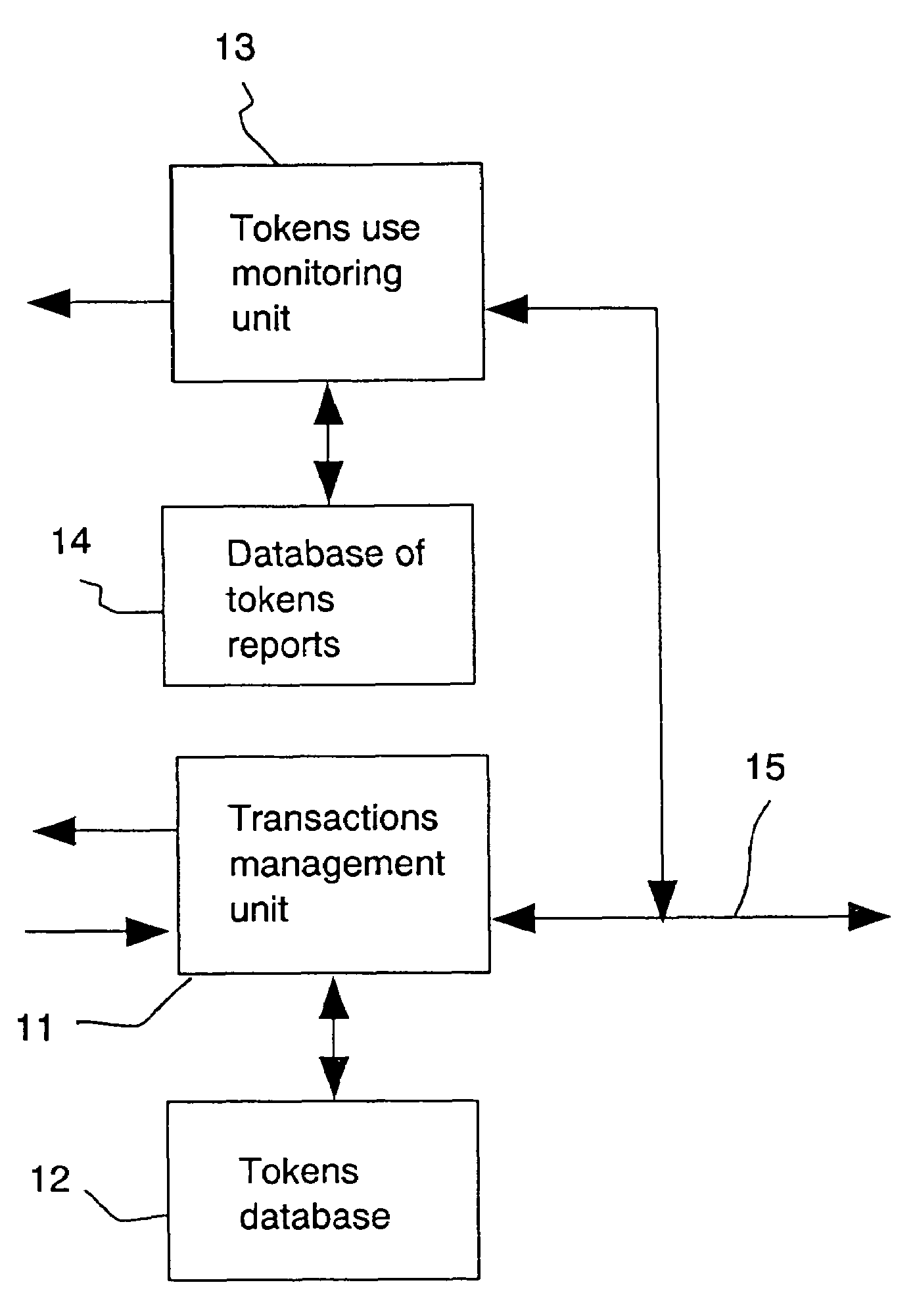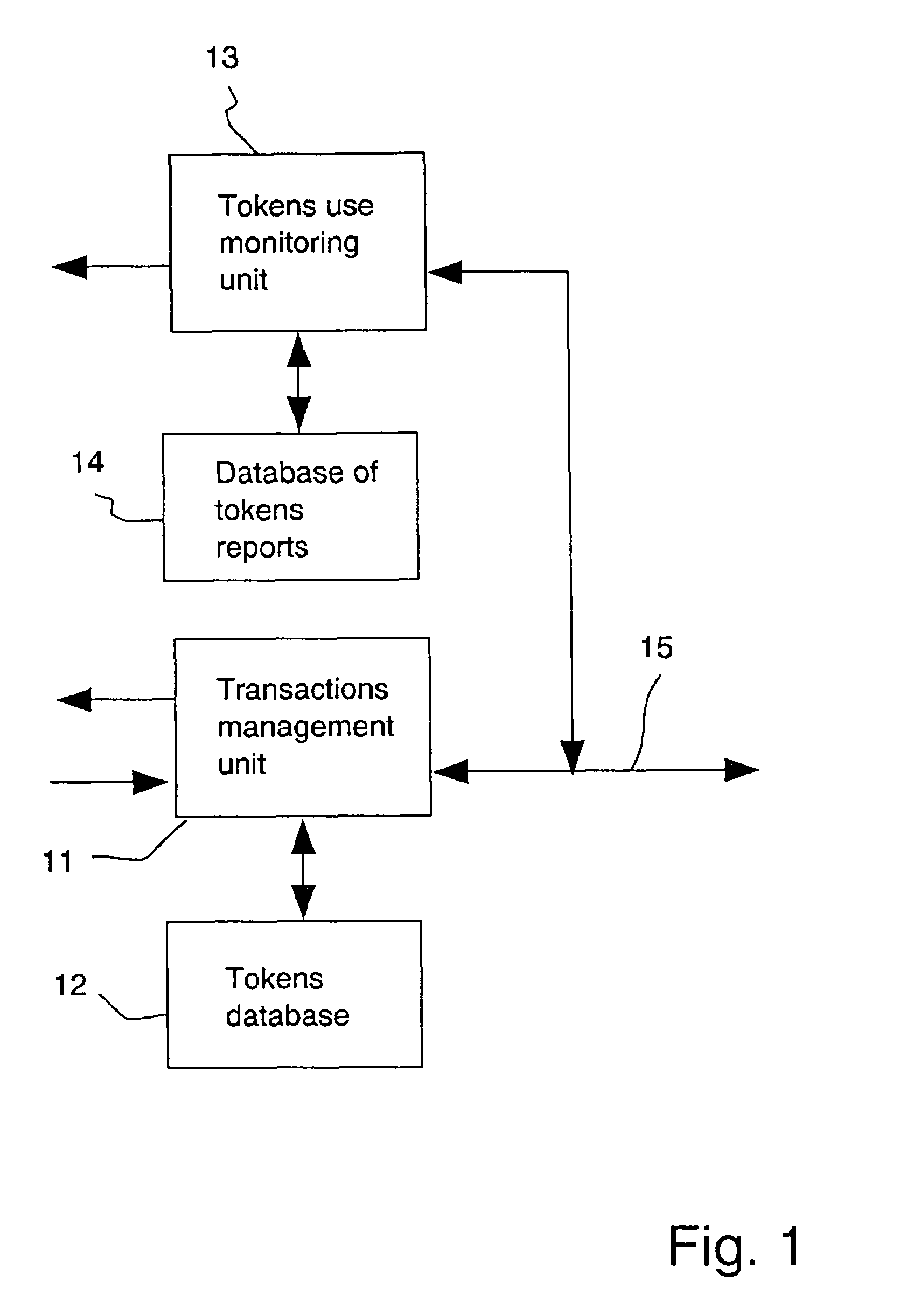Payment system and method using tokens
a payment system and token technology, applied in the field of systems and methods for collecting payments, can solve the problems of not being able to pay service/product providers, prior art systems and methods may not be suitable to answer this need, and service providers may find it difficult to collect a fee for services performed, etc., to achieve the effect of high visibility of each user's proper condu
- Summary
- Abstract
- Description
- Claims
- Application Information
AI Technical Summary
Benefits of technology
Problems solved by technology
Method used
Image
Examples
Embodiment Construction
[0048]A preferred embodiment of the present invention will now be described by way of example and with reference to the accompanying drawings.
[0049]Referring to FIG. 1, a system for presenting reports on tokens to other users and for monitoring other's reports may include the following parts:
[0050]1. a transactions management unit 11, using tokens. The unit 11 is activated when the user requires to perform a service for which payment using tokens is required. For example, such a service may include a special type of E-mail or an encryption procedure or other service provided, on the Internet or elsewhere.
2. a tokens database 12, which includes information on tokens acquired from the service provider, which is usually also the tokens issuer. Unit 11 reads tokens from the database 12 each time there is a requirement to use the service and pay with tokens. Only if there are tokens available, will the service be performed. If the service is performed, then the database 12 is instructed ...
PUM
 Login to View More
Login to View More Abstract
Description
Claims
Application Information
 Login to View More
Login to View More - R&D
- Intellectual Property
- Life Sciences
- Materials
- Tech Scout
- Unparalleled Data Quality
- Higher Quality Content
- 60% Fewer Hallucinations
Browse by: Latest US Patents, China's latest patents, Technical Efficacy Thesaurus, Application Domain, Technology Topic, Popular Technical Reports.
© 2025 PatSnap. All rights reserved.Legal|Privacy policy|Modern Slavery Act Transparency Statement|Sitemap|About US| Contact US: help@patsnap.com



